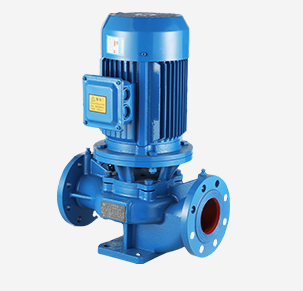Somali
- Afrikaans
- Albanian
- Amharic
- Arabic
- Armenian
- Azerbaijani
- Basque
- Belarusian
- Bengali
- Bosnian
- Bulgarian
- Catalan
- Cebuano
- Corsican
- Croatian
- Czech
- Danish
- Dutch
- English
- Esperanto
- Estonian
- Finnish
- French
- Frisian
- Galician
- Georgian
- German
- Greek
- Gujarati
- Haitian Creole
- hausa
- hawaiian
- Hebrew
- Hindi
- Miao
- Hungarian
- Icelandic
- igbo
- Indonesian
- irish
- Italian
- Japanese
- Javanese
- Kannada
- kazakh
- Khmer
- Rwandese
- Korean
- Kurdish
- Kyrgyz
- Lao
- Latin
- Latvian
- Lithuanian
- Luxembourgish
- Macedonian
- Malgashi
- Malay
- Malayalam
- Maltese
- Maori
- Marathi
- Mongolian
- Myanmar
- Nepali
- Norwegian
- Norwegian
- Occitan
- Pashto
- Persian
- Polish
- Portuguese
- Punjabi
- Romanian
- Russian
- Samoan
- Scottish Gaelic
- Serbian
- Sesotho
- Shona
- Sindhi
- Sinhala
- Slovak
- Slovenian
- Somali
- Spanish
- Sundanese
- Swahili
- Swedish
- Tagalog
- Tajik
- Tamil
- Tatar
- Telugu
- Thai
- Turkish
- Turkmen
- Ukrainian
- Urdu
- Uighur
- Uzbek
- Vietnamese
- Welsh
- Bantu
- Yiddish
- Yoruba
- Zulu
Telephone: +86 13120555503
Email: frank@cypump.com
Nov . 19, 2024 11:03 Back to list
pump pipeline system analysis and design
Pump Pipeline System Analysis and Design
The design and analysis of pump pipeline systems are critical components in various industries, including oil and gas, water supply, chemical manufacturing, and irrigation. These systems are essential for transporting fluids efficiently, safely, and cost-effectively. This article explores the key aspects of pump pipeline system analysis and design, including system requirements, selection of appropriate equipment, and considerations for optimizing performance.
Understanding System Requirements
The first step in designing a pump pipeline system is understanding the specific requirements of the application. This involves identifying the type of fluid to be transported, its physical and chemical properties, and the environmental conditions of the installation site. Key factors such as flow rate, pressure, temperature, and viscosity must be thoroughly analyzed. Understanding these requirements facilitates the selection of appropriate pumps, pipes, and fittings, ensuring that the system operates efficiently within the desired parameters.
Selection of Pumps
The selection of pumps is one of the most critical aspects of any pipeline system design. There are various types of pumps available, including centrifugal pumps, positive displacement pumps, and submersible pumps, each with its unique characteristics and applications. Centrifugal pumps are commonly used for transporting fluids in large volumes, while positive displacement pumps are more suitable for high-viscosity fluids or applications requiring precise flow control. It is essential to evaluate factors such as efficiency, maintenance, and lifecycle costs when selecting the appropriate pump for a specific application.
Pipeline Sizing and Materials
Once the pump has been selected, the next step is to design the pipeline network. Proper sizing of the pipeline is crucial to minimize energy losses due to friction, which can significantly affect system efficiency. The Darcy-Weisbach equation is often used to calculate head loss due to friction in the pipes. Additionally, considerations must be made for elevation changes, fittings, and other components that may contribute to overall system resistance.
pump pipeline system analysis and design

The choice of materials for the pipeline also plays a vital role in system design. Factors such as chemical compatibility, temperature resistance, and mechanical strength must be considered to prevent corrosion and ensure durability. Common materials used in pipeline systems include steel, PVC, and polyethylene, each suited for different applications and environments.
Hydraulic Analysis
Hydraulic analysis is essential for evaluating the performance of the entire system. Computational Fluid Dynamics (CFD) simulations can be employed to predict flow patterns, pressure drops, and potential problem areas within the pipeline. This analysis helps engineers optimize the design and identify any necessary modifications before the actual installation. Proper hydraulic modeling can also assist in determining the most efficient operation parameters for the pump and pipeline system.
Operational Considerations and Maintenance
Once the pump pipeline system is operational, ongoing monitoring and maintenance are vital for ensuring long-term reliability and efficiency. Regular inspection of pumps, valves, and piping can prevent unexpected failures and prolong the life of the system. Implementing advanced monitoring technologies, such as flow meters and pressure sensors, can provide real-time data, enabling operators to make informed decisions regarding operation and maintenance schedules.
Conclusion
In conclusion, the design and analysis of pump pipeline systems require a comprehensive understanding of various factors including fluid characteristics, pump selection, pipeline sizing, and hydraulic analysis. By carefully considering these elements, engineers can create efficient, reliable, and cost-effective systems that meet the specific needs of their applications. Ongoing maintenance and monitoring are equally important to ensure that these systems continue to perform optimally throughout their lifespan. As industries continue to evolve, the importance of robust and efficient pump pipeline systems will remain a fundamental aspect of fluid transport in any sector.
-
Heavy-Duty Mining Sludge Pumps - Wear-Resistant Slurry Handling
NewsAug.02,2025
-
Horizontal Split Case Pump with GPT-4 Turbo | High Efficiency
NewsAug.01,2025
-
ISG Series Pipeline Pump - Chi Yuan Pumps | High Efficiency, Durable Design
NewsAug.01,2025
-
Advanced Flue Gas Desulfurization Pump with GPT-4 Turbo | Durable & Efficient
NewsJul.31,2025
-
ISG Series Vertical Pipeline Pump - Chi Yuan Pumps | Advanced Hydraulic Design&Durable Construction
NewsJul.31,2025
-
ISG Series Vertical Pipeline Pump - Chi Yuan Pumps | Energy Efficient & Low Noise
NewsJul.31,2025










